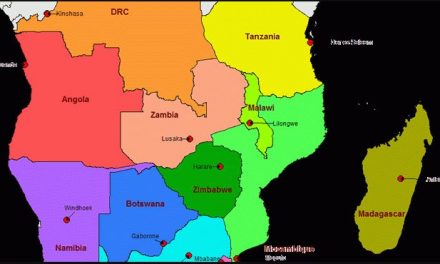
How Namibian grade 12 students performed over the past two decades

By HJ Sartorius von Bach.
In my last article, positive changes of the Namibian secondary education system were portrayed, which resulted from massive reform challenges to refresh education by introducing access, equity, quality and democracy; all necessary for human capital formation. The Cambridge system was used as it was believed that successful students would obtain an international senior secondary passport to progression and success. The real question to be answered is whether the secondary education system over the years was strengthened to produce qualified people to take up jobs for economic growth.
Therefore, a visual situation analysis of the grade 12 school output is portrayed, using NSSCH outputs. The system allows the maximum points for six subjects of 54, while the basic entrance requirement to an undergraduate degree is 25 points. In reality however, because of limited tertiary study places available, the required points to gain access is much higher, such as 33 points for a BSc or 37 points for a degree in medicine.
Since the national averages do not portray the real situation of secondary education, and specifically the NSSCH, a disaggregation of results of regional output is given. These findings are important to determine whether historic disparities were adjusted to accelerate human capital formation. Because of the volume of the data, a time series of randomly selected years were used to present absolute and relative changes. NSSCH student marks were grouped by regions, to determine the enrollment number, performance and regional distortion of performances.
National data shows that since independence, the access to secondary education increased significantly. The number of grade 12 enrollments for NSSCH alone increased from 904 in 1996 to 17,968 in 22 years. This is a twentyfold increase while the national population only grew annually by 3.8%. It can therefore be classified as a great achievement and the foundation for the formation of human capital.
National access to grade 12 education in Namibia from 1996 to 2018

Source: National Media holdings (2018) and http://www.citypopulation.de/Namibia.html
This aggregated increase in grade 12 students has to be compared to regional circumstances. Data shows that the percentage (number of grade 12 student divided by human population) increased significantly over time to almost reach the demographically maximum level. From the human capital perspective it is outstanding that access to higher level subjects increased more than the access rate of ordinary level subjects. Furthermore, it is interesting to observe that the highest NSSCH access rate was found in the regions Omusati, Oshana, Zambezi, Ohangwena, and Oshikoto, while the lowest access was found in Kunene, Omaheke and Otjozondjupa senior secondary schools. The enrollment during 2018 showed 3,433 NSSCH students from Omusati vs the low enrollment of only 46 Kunene grade 12 NSSCH students. To put this into perspective, the student enrollment in Omusati is 18 times better than Kunene, i.e. in Kunene only 1 student per 1495 citizens was enrolled for NSSCH, while in Omusati the enrollment was 1 student per 81 citizens.
On a national basis, the Namibian average NSSCH student total point declined from 20.47 to less than half over two decades. This worrisome trend together with increasing enrollment probably contributed to the high unemployment of the Millennials, which caused them increasingly to become disengaged and disconnected. This can be regarded as a national concern and requires high-level attention to increase the marginal performance levels since 2013.
To find the root of this trend, the paper analyzed regional averages to determine whether educational disparities were addressed during the past decades. As expected, the urban Khomas region did best, while rural regions distant to infrastructure development generally performed least. The regions where this worrisome trend is observed are Hardap, Omaheke, Erongo, Otjozondjupa, Oshikoto and Zambezi. Data also showed that the performance levels between regions are converging. Currently, the best region on average performed twice as good as the worst performing region, while two decades ago the best performing region was three times better than the worst performing one.
Regional average total student points during the past 2 decades

1 – Kavango East did marginally better than Kavango West
Therefore, averages were disaggregated into three categories: poor performers, medium performers and top performers. Data provides a concerning trend, namely that the relative proportion of national non-performers increased during the past 2 decades and that national performers are becoming less by the year.

It is evident that general access to secondary education improved significantly, but unfortunately, data shows that the performance of secondary education as reflected in student points continued declining. Although some of the national educational goals are met, the regional disparities remain significant and need to be addressed. The assessment shows that further detailed monitoring of the educational outputs is required. It is necessary to determine whether the recently-announced changes to secondary education will contribute to the formation of human capital to relief structural unemployment in the long run.
An attempt is made in next week’s article to provide some reasons for the presented trends in this article.











































